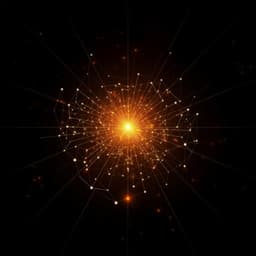
Physics
Oscillations of highly magnetized non-rotating neutron stars
M. Y. Leung, A. K. L. Yip, et al.
This groundbreaking research by Man Yin Leung, Anson Ka Long Yip, Patrick Chi-Kit Cheong, and Tjonnie Guang Feng Li explores the intricate pulsation modes of non-rotating neutron stars influenced by strong toroidal magnetic fields. Discover how stellar oscillations remain stable until an astonishing magnetic-to-binding energy threshold is crossed, resulting in significant frequency suppression due to the deformation of these compact celestial bodies.
Playback language: English
Related Publications
Explore these studies to deepen your understanding of the subject.







